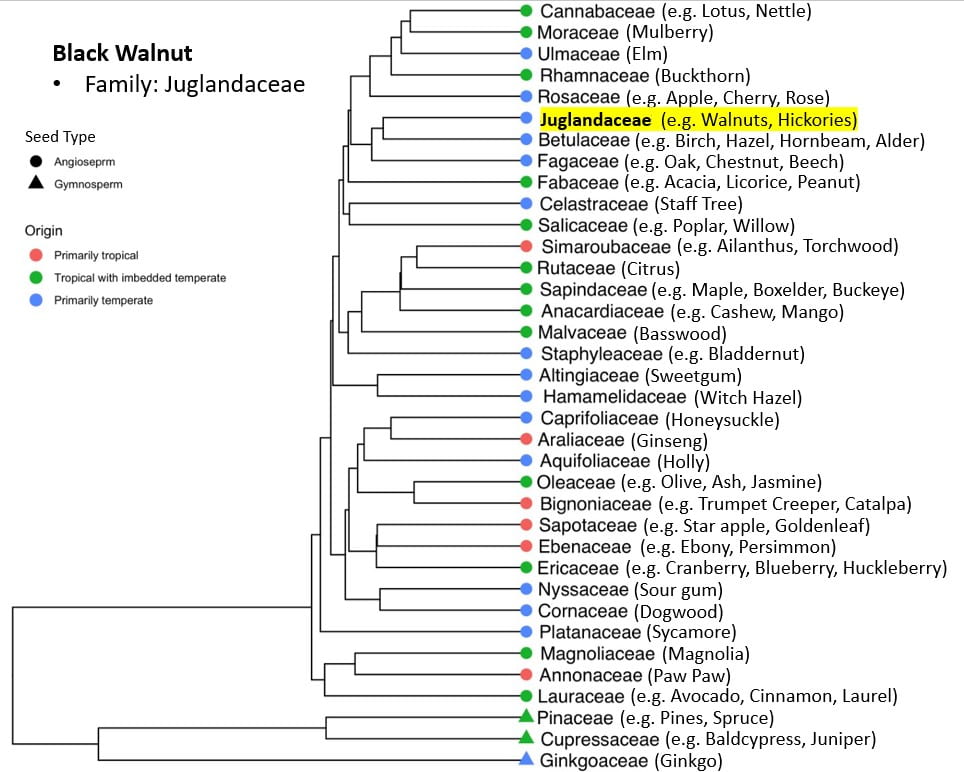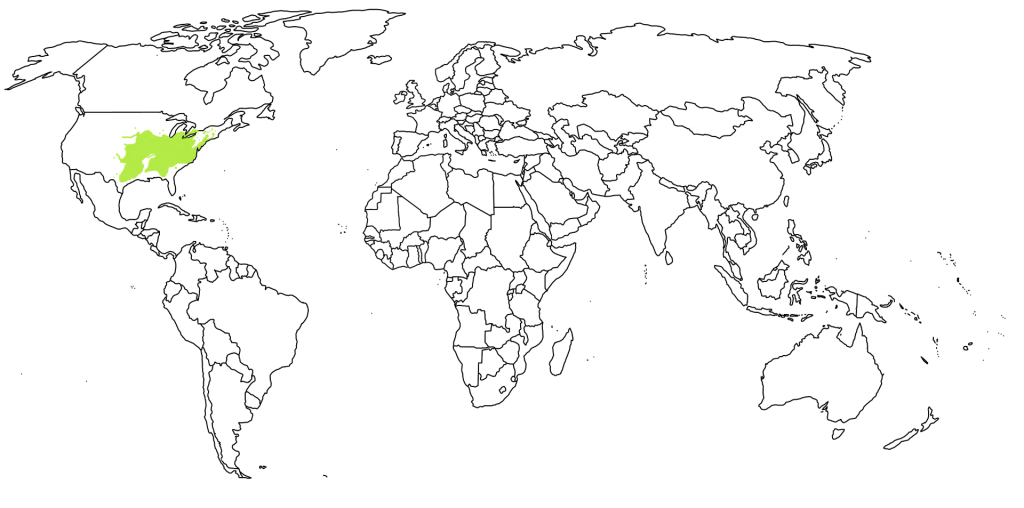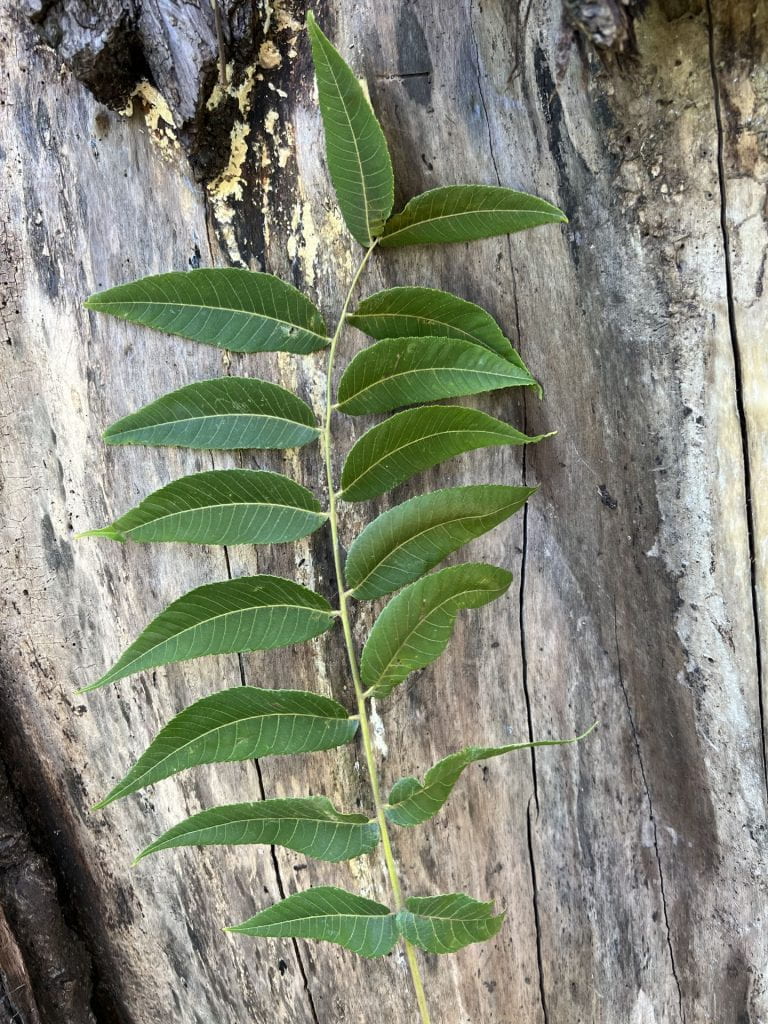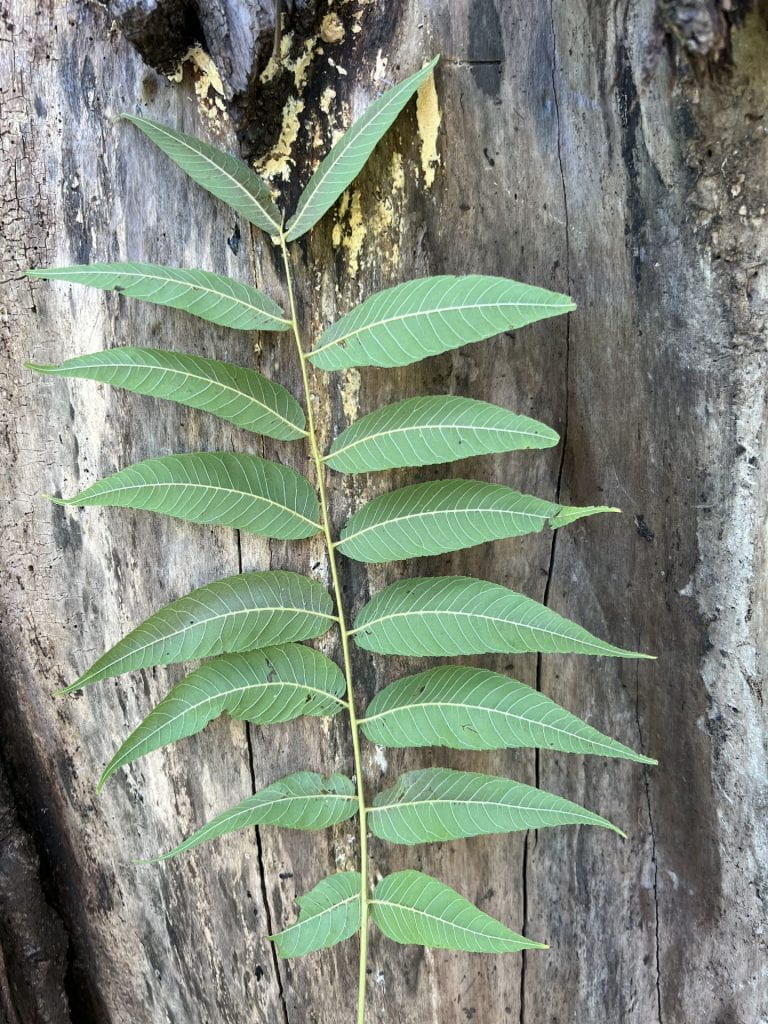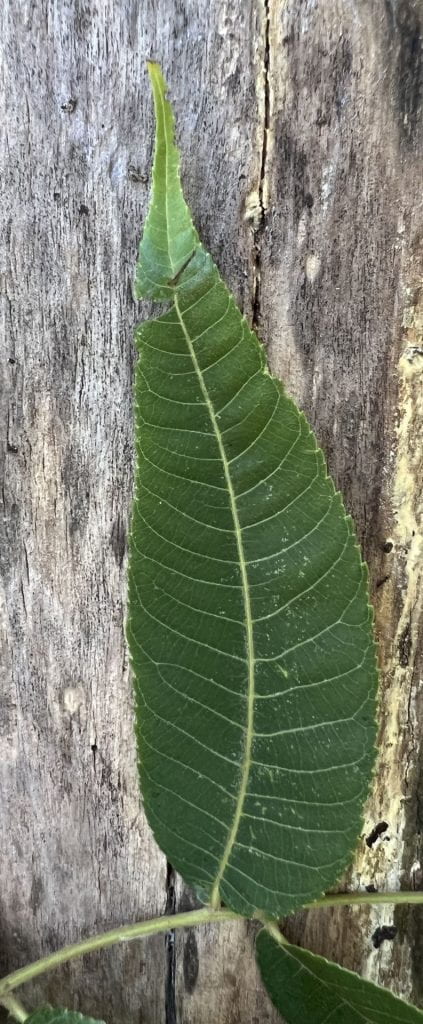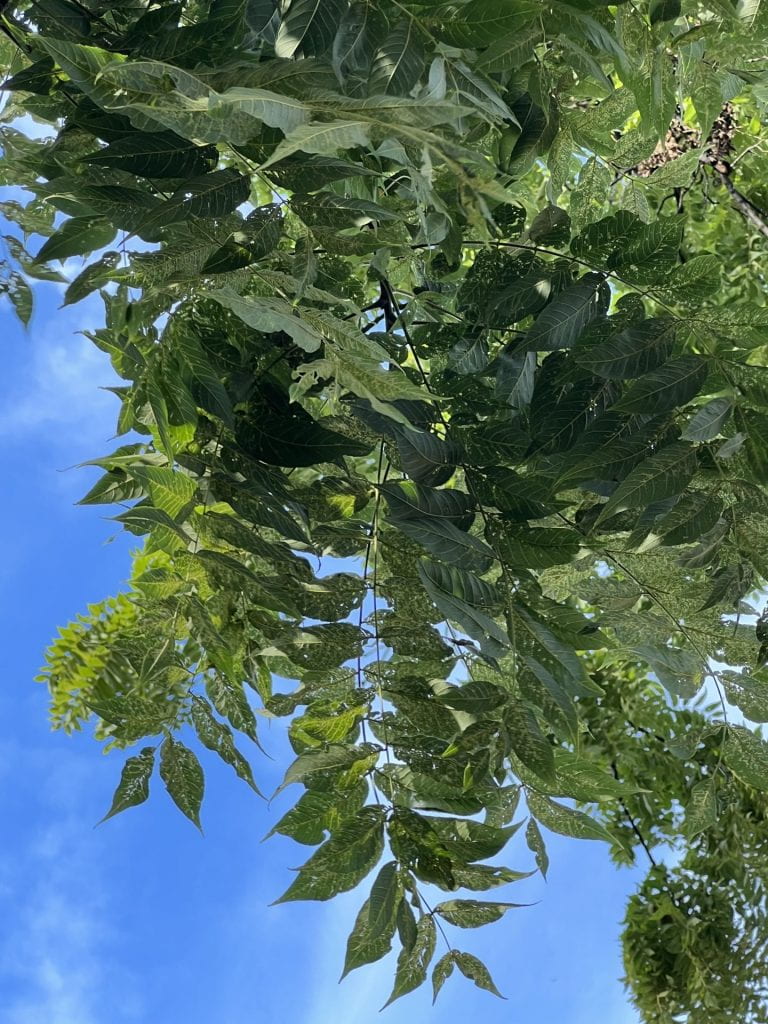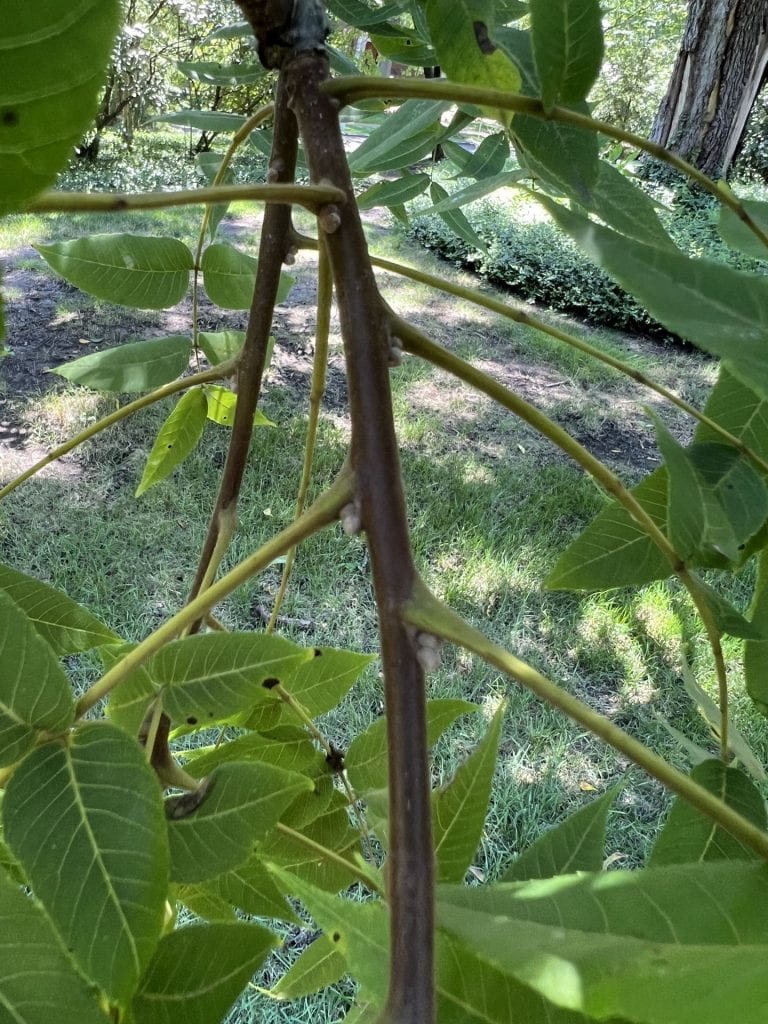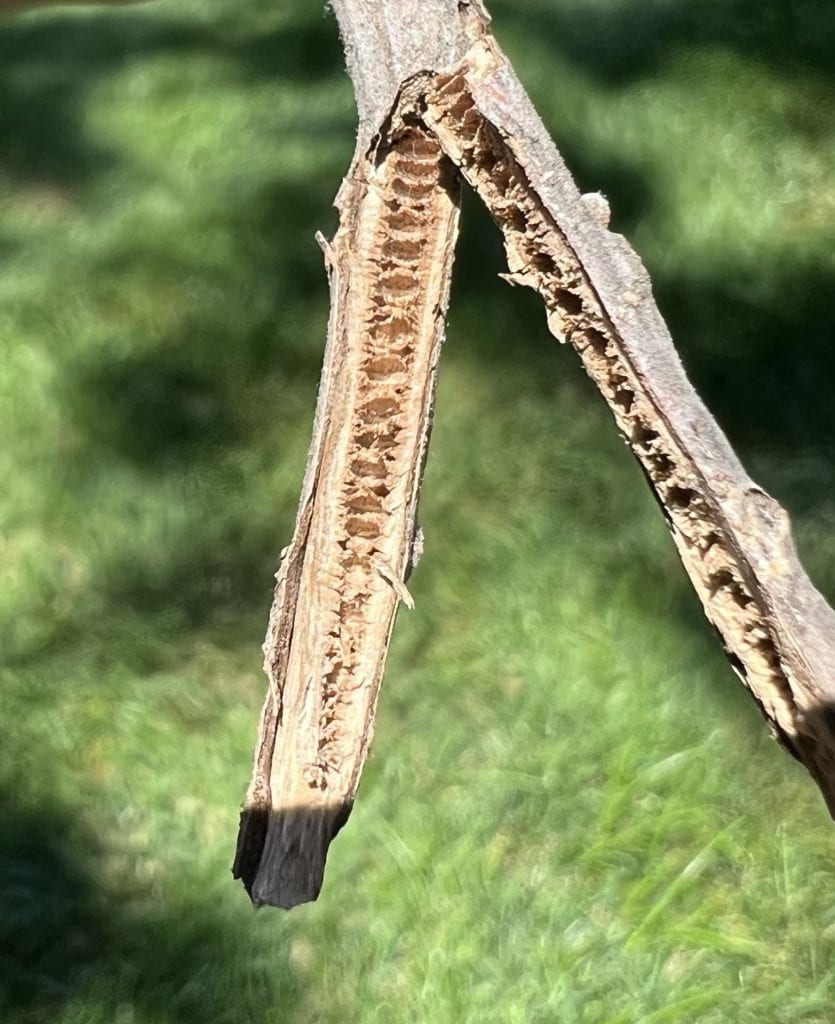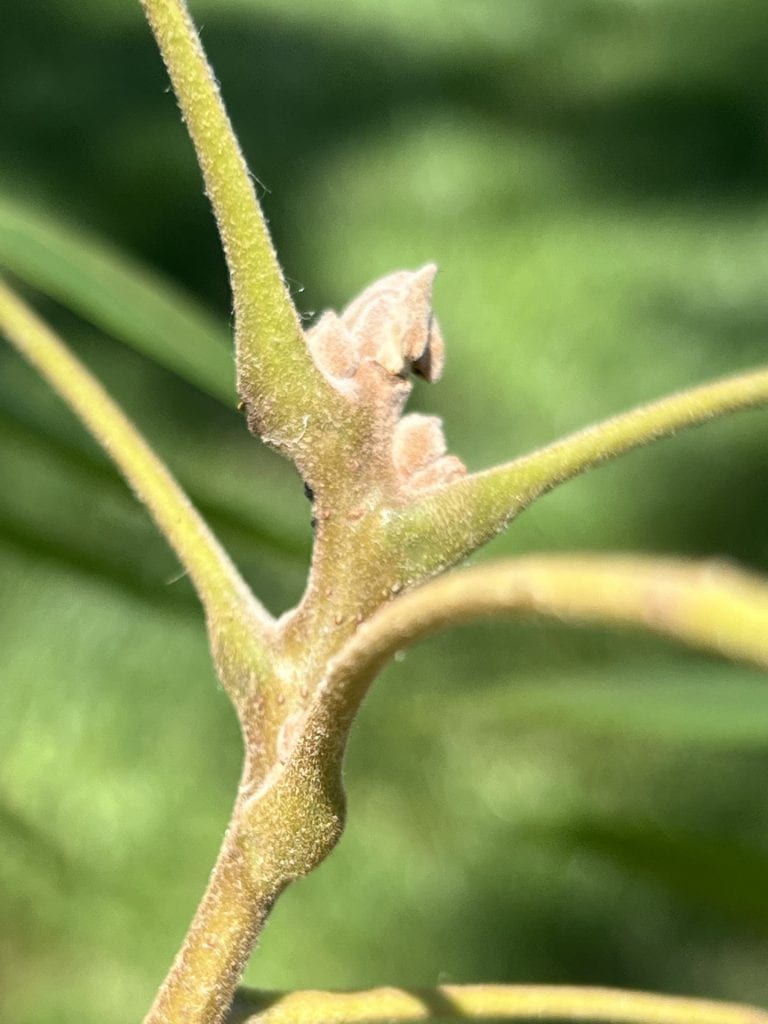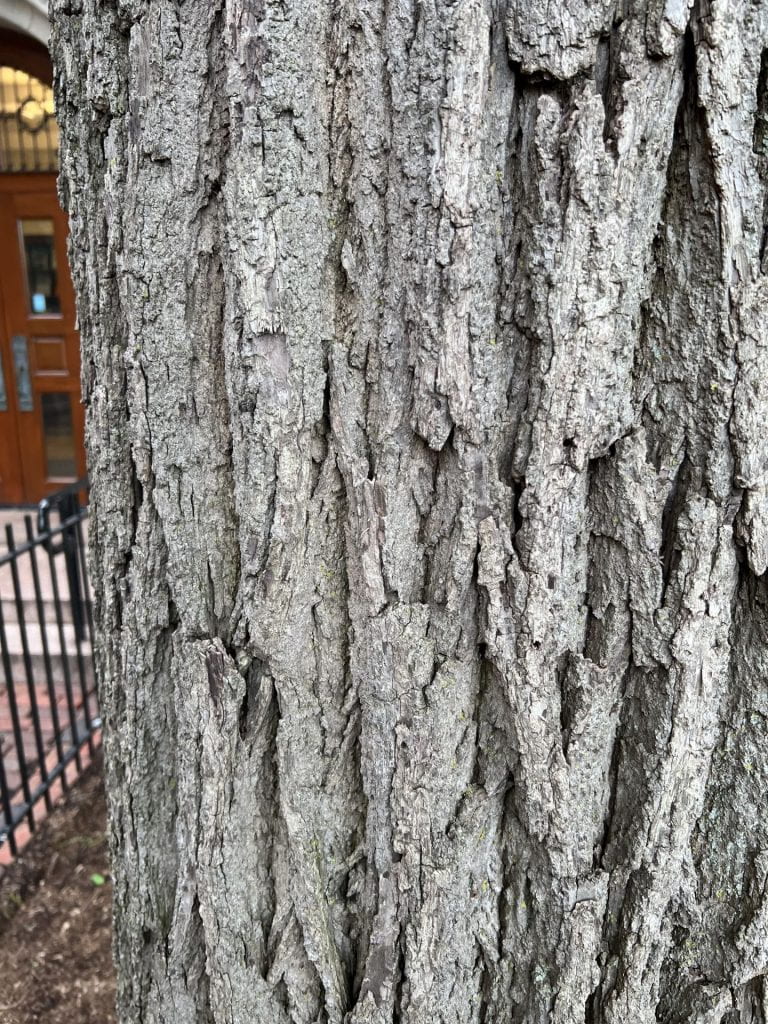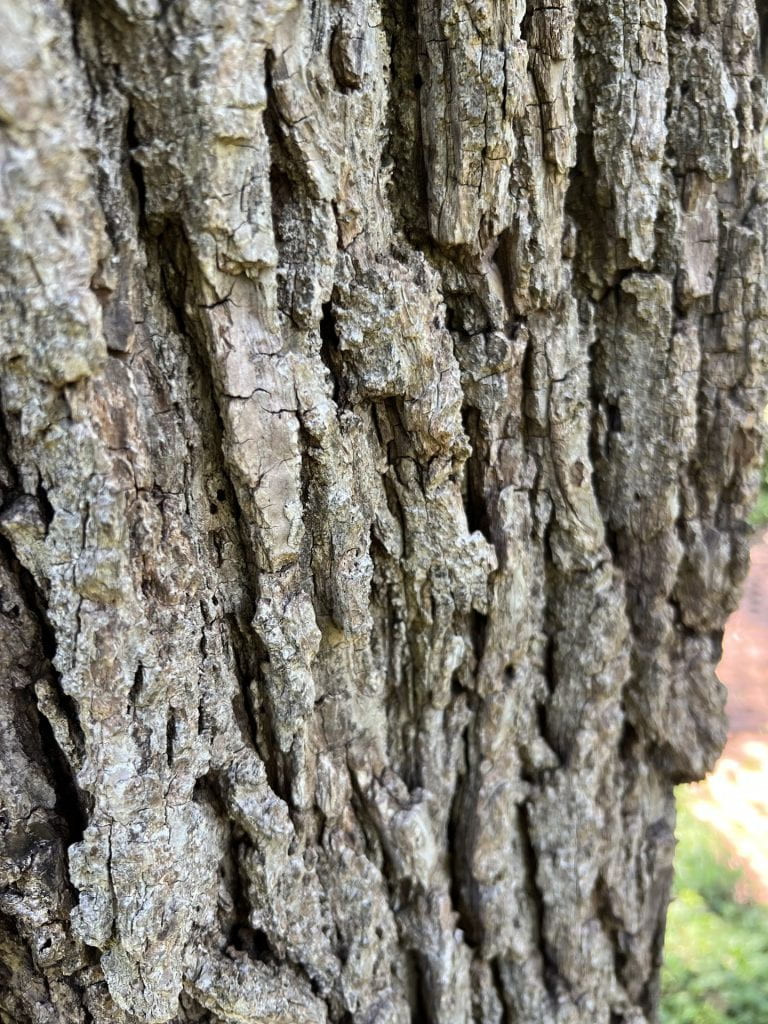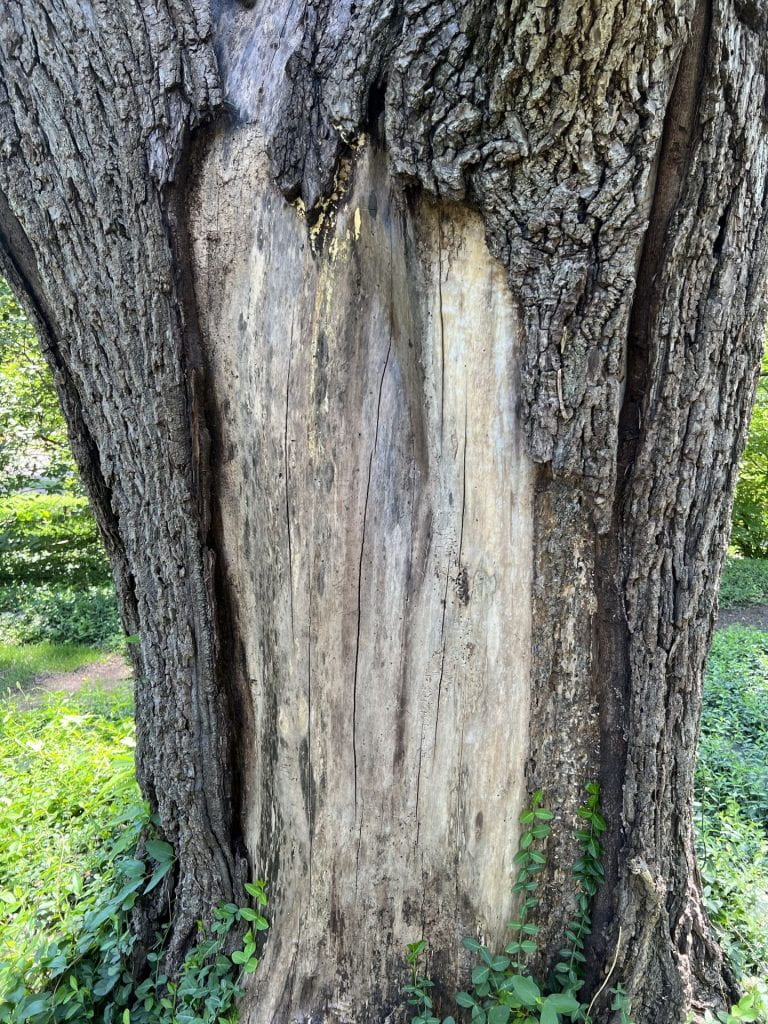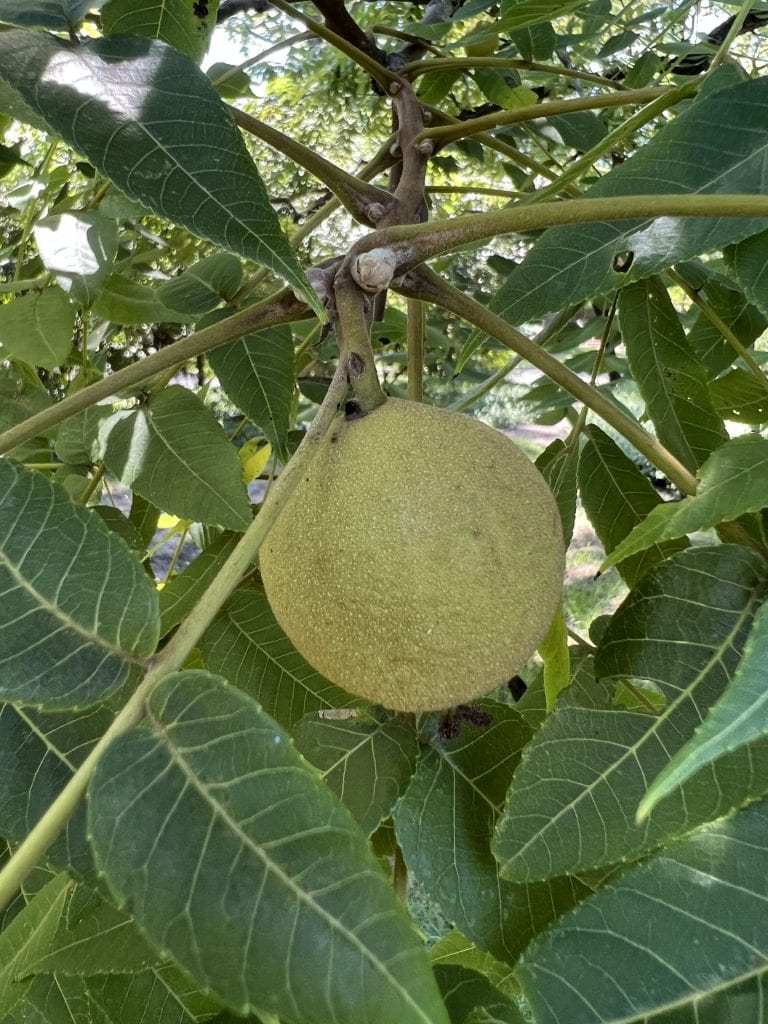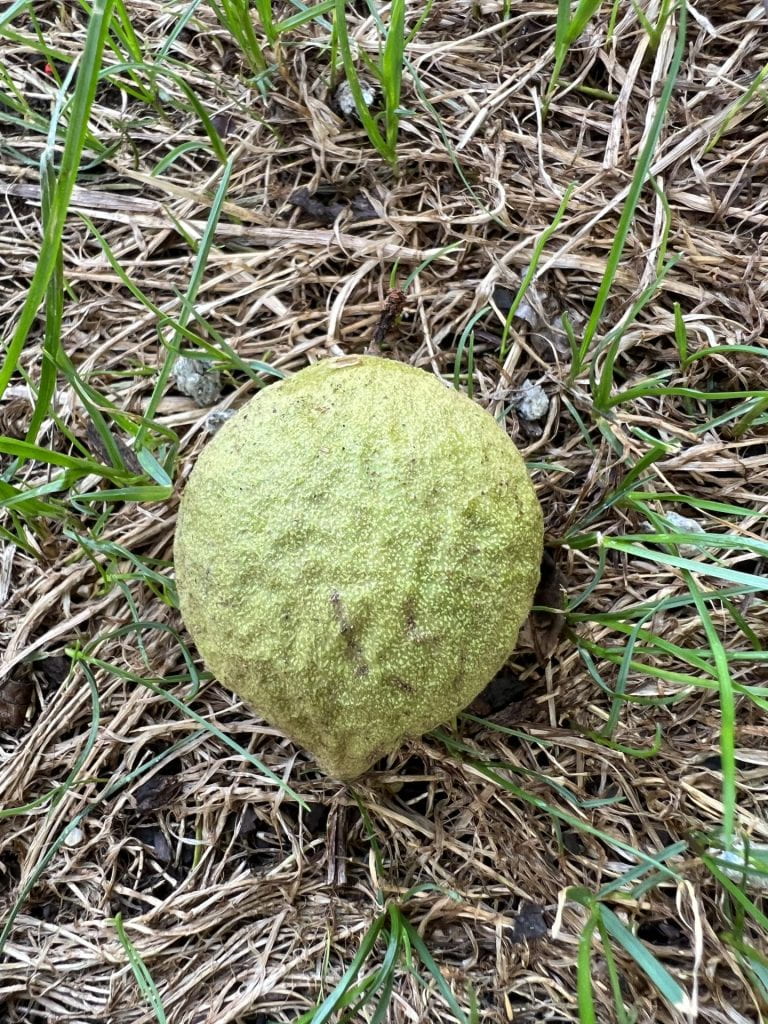Black Walnut (Deaccessioned)
Arbor Walk #61, Treekeeper ID #5016

This is a large deciduous tree common to woodlands in the eastern United States from Massachusetts to Texas. It is natively found in rich woods and fertile river valleys across the state of Missouri.
Mature trees produce edible walnuts in the fall, which are sold commercially in Missouri and used to make a variety of other food products. Native Americans ate the nuts from these trees and made syrup from their sap, and reportedly even threw the poisonous husks of the nuts into ponds to make the fish within easier to catch. The trees are also prized for their wood, which is considered to be the best for furniture making of any native American tree species. This has led to overharvesting and a sharp decline in wild populations across the country.
More information on the Black Walnuts in our Arboretum here!

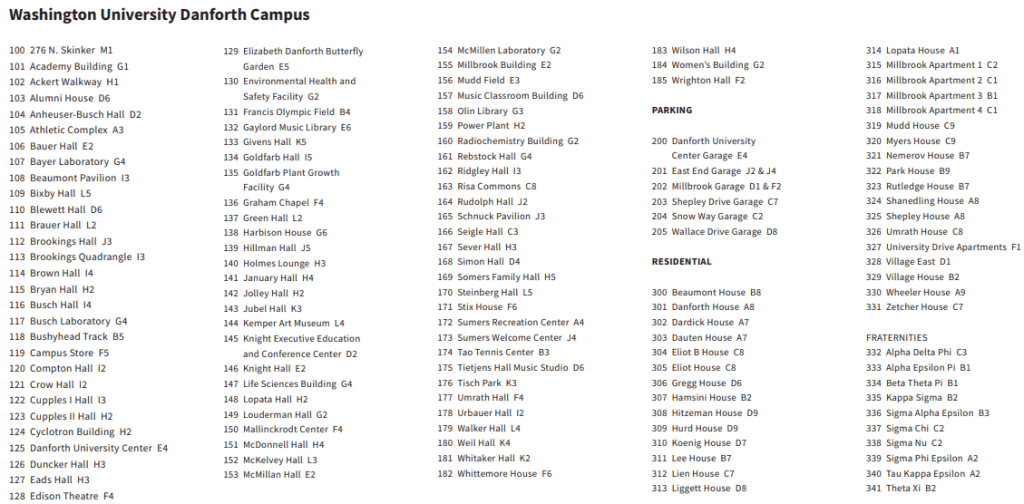
GPS Coordinates
N/A
Percent Concrete
N/A
Distance to Buildings
| Year | Close Building #1 | Close Building #2 | Close Building #3 |
|---|---|---|---|
| 2020 | Whittemore House, 64.94 m | McCarthy House, 85.04 m | 6465 Ellenwood Ave., 32.06 m |
Distance to Other Species
| Year | Close Species #1 | Close Species # 2 | Close Species # 3 |
|---|---|---|---|
| 2020 | American Holly, 8.87 m | Eastern Redbud, 10.15 m | Eastern Redbud, 10.34 m |
Standard Measurements
| Year | Height (m) | DBH (cm) | Crown Diameter N-S (m) | Crown Diameter E-W (m) | Average Crown Diameter (m) |
|---|---|---|---|---|---|
| 2020 | 31.6486 | 105.73 | 20.62 | 24.72 | 22.67 |
Nests and Pests
| Year | Description |
|---|---|
| 2020 | The tree has ivy creeping up the trunk Bark has moss and algae on the trunk bark Some spots of discoloration on the trunk bark, possibly fungi or bacteria Bark peeling off in long strips |
Leaf Identification
The leaves of the Black Walnut are even-pinnately compounded with 14 to 24 leaflets. They are a yellowish-green color and turn to yellow in the fall. It has an alternate leaf arrangment. The leaflets are ovate- to lanceolate-shaped with serrated margins and pinnate veins. The rachis can be hairy (pubescent).
Twig and Bud Identification
The twigs of the Black Walnut are light brown in winter and have chambered piths. The leaf scars are three lobed, and botanists often call it a “money-face.” The buds are tan and comparetively large to other trees and tan. It has multiple, sometimes pubescent, scales.
Bark Identification
The Black Walnut has ridged and furrowed grey bark.
Fruit Identification
The fruit of the Black Walnut is a round, indeshiscent drupe with a green, inedible husk around it. The seed inside is edible. The fruit is incredibly firm, and is very hard to break open.
Flower Identification
The flowers of the Black Walnut are yellow-greenish. The males have 3″ to 5″ long, single-stemmed catkins , and the females are on short, green spikes.
[photo forthcoming]
